Jakob Nielsen proposed 10 general principles for interaction design, called “heuristics” because they serve as guiding rules rather than specific usability standards.
Special Thanks:
- Kelley Gordon for designing the images and posters in this article.
- Kate Moran and Feifei Liu for updating the names, descriptions, and examples of these principles.
Table of Contents
- Visibility of System Status
- Match Between System and the Real World
- User Control and Freedom
- Consistency and Standards
- Error Prevention
- Recognition Rather Than Recall
- Flexibility and Efficiency of Use
- Aesthetic and Minimalist Design
- Help Users Recognize, Diagnose, and Recover from Errors
- Help and Documentation
1: Visibility of System Status
The design should always keep users informed about the current state of the system by providing timely feedback.
Example: A “You Are Here” sign on a shopping mall map helps users determine their location and plan their next steps.
Design Tips:
- Clearly communicate system status; do not perform critical actions without notifying the user.
- Provide immediate feedback when changes occur in the system.
- Build trust by maintaining continuous and transparent communication.
Learn more: Visibility of System Status
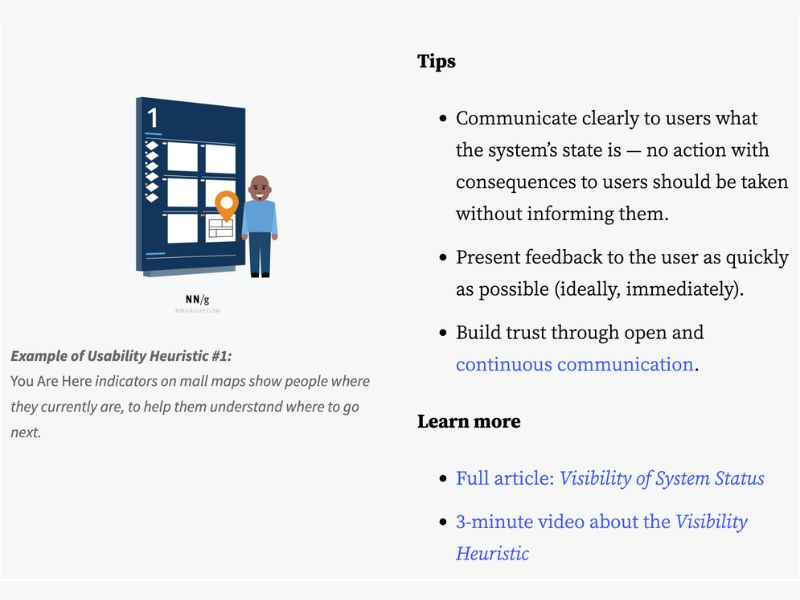
2: Match Between System and the Real World
The design should use language, symbols, and concepts familiar to users, rather than internal system terminology.
Example: A stovetop with a control panel layout that corresponds to the burner positions makes it easier for users to identify which control operates which burner.
Design Tips:
- Use words and symbols that are easy for users to understand.
- Avoid confusing industry jargon.
- Conduct user research to understand how they interpret and interact with the product.
Learn more: Match Between System and the Real World
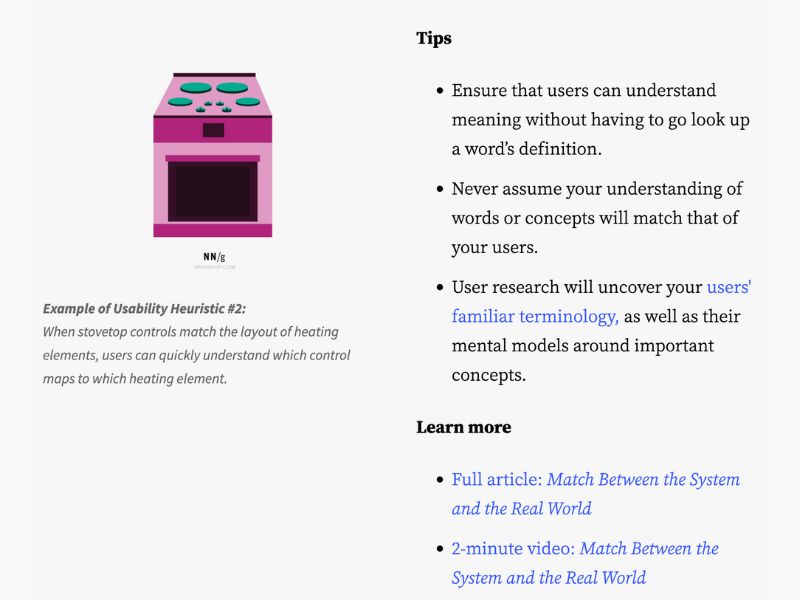
3: User Control and Freedom
Users should have options to undo actions or exit processes when they make mistakes or change their minds.
Example: An emergency exit sign with bright lighting helps users quickly find a way out in case of an emergency.
Design Tips:
- Support Undo and Redo functions.
- Provide a Cancel button to allow users to exit processes.
- Ensure exit options are visible and easily accessible.
Learn more: User Control and Freedom
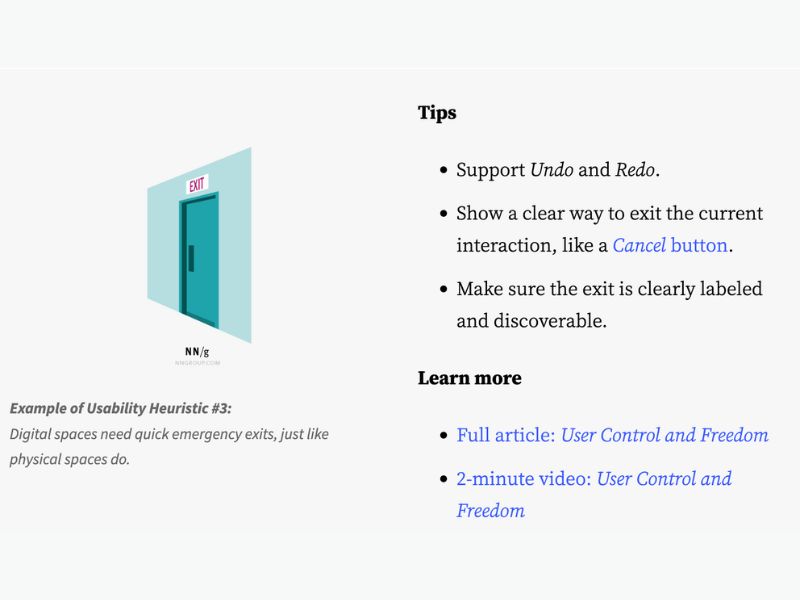
4: Consistency and Standards
Users should not have to guess the meaning of words, actions, or symbols. Follow platform and industry standards.
Example: Hotel reception desks are usually located near the entrance, making it easy for guests to recognize the check-in area.
Design Tips:
- Maintain internal consistency within the product or ecosystem.
- Follow industry standards to ensure familiarity for users.
Learn more: Consistency and Standards
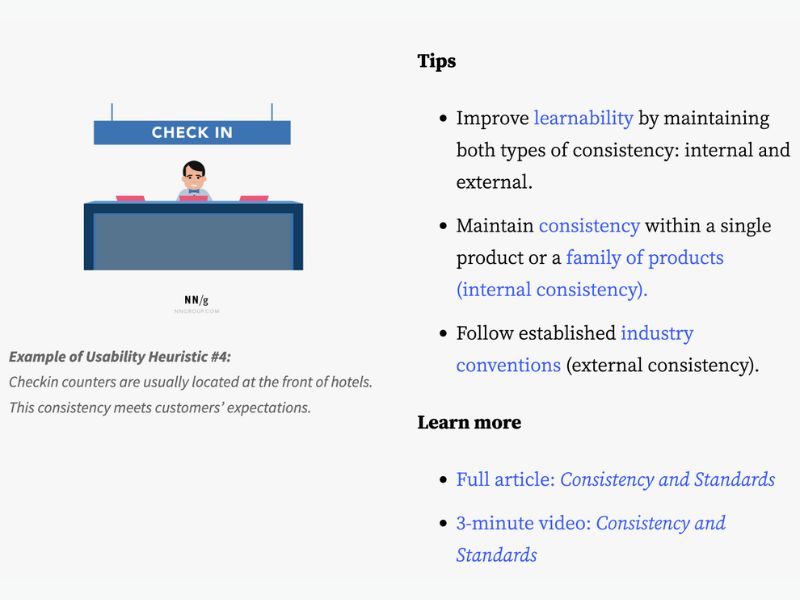
5: Error Prevention
Instead of just displaying error messages, design the system to prevent errors from occurring in the first place.
Example: Guardrails on mountain roads help prevent vehicles from veering off cliffs when drivers lose control.
Design Tips:
- Prioritize preventing severe errors first.
- Provide warnings before performing actions that could lead to errors.
- Support Undo functionality to minimize negative consequences.
Learn more: Error Prevention
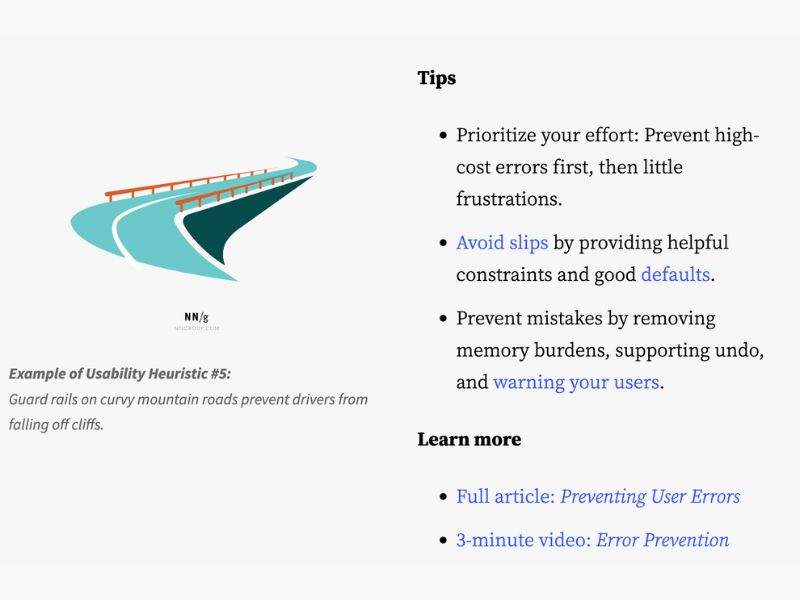
6: Recognition Rather Than Recall
The interface should display necessary options and information so users don’t have to rely on memory.
Example: It’s easier to answer the question “Is Lisbon the capital of Portugal?” than to recall the capital of Portugal from memory.
Design Tips:
- Display essential information directly in the interface.
- Avoid requiring users to remember complex steps.
Learn more: Recognition Rather Than Recall

7: Flexibility and Efficiency of Use
The design should support both novice and experienced users by offering shortcuts and customization options.
Example: Locals often know shortcuts that allow them to travel faster than using the main roads.
Design Tips:
- Enable keyboard shortcuts and gesture controls to speed up interactions.
- Provide personalization options so users can customize the interface according to their needs.
Learn more: Flexibility and Efficiency of Use
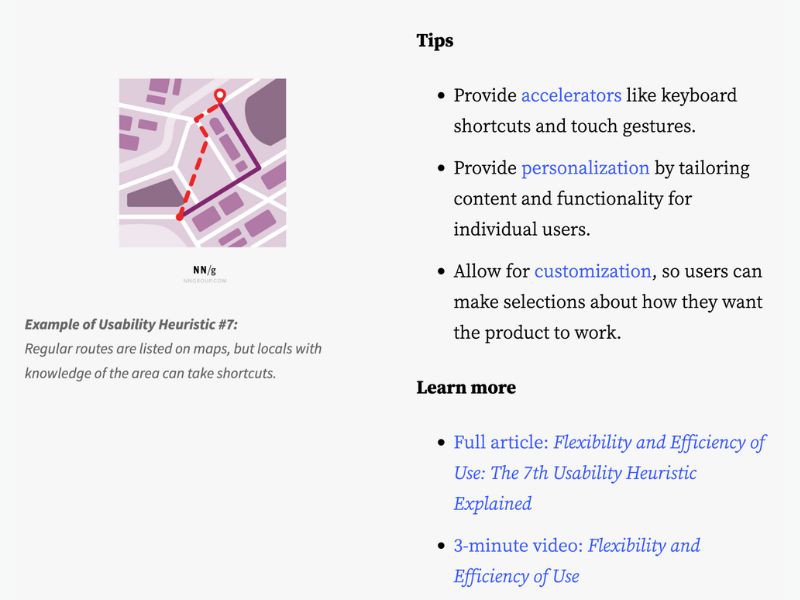
8: Aesthetic and Minimalist Design
Eliminate unnecessary elements to make the interface clear and easy to use.
Example: A teapot with an overly complex design may be difficult to use or clean.
Design Tips:
- Focus on the most important content and functions.
- Avoid distracting users with unnecessary elements.
Learn more: Aesthetic and Minimalist Design
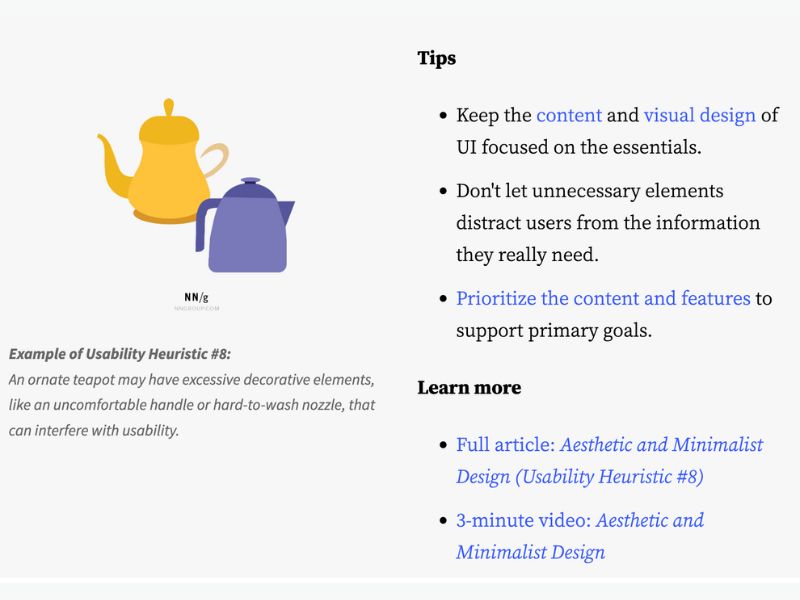
9: Help Users Recognize, Diagnose, and Recover from Errors
Error messages should be clear, easy to understand, and guide users on how to fix the issue.
Example: A “Wrong Way” sign helps drivers recognize they are going in the wrong direction and need to stop.
Design Tips:
- Use colors and icons that are easy to recognize.
- Explain errors in simple language without technical jargon.
Learn more: Helping Users Recover from Errors
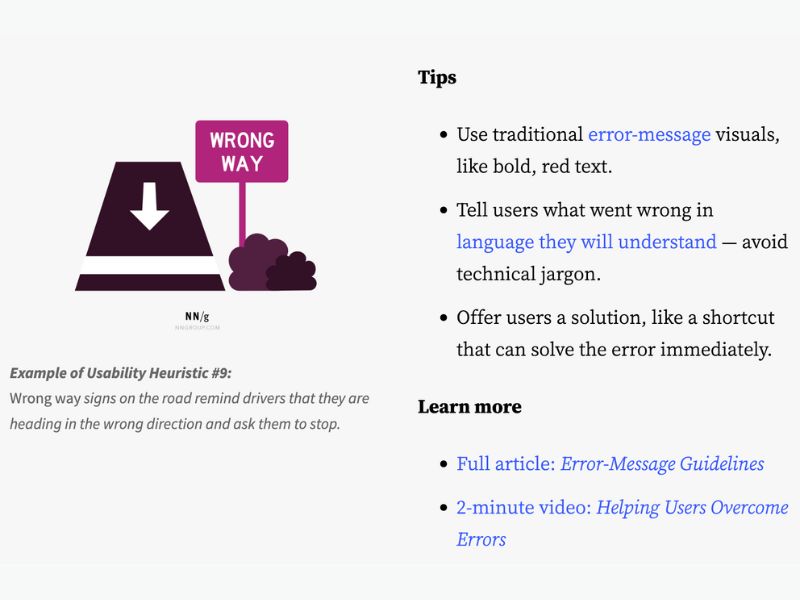
10: Help and Documentation
Even the best-designed systems require clear, accessible, and easy-to-understand help resources.
Example: Airport information kiosks allow passengers to quickly find necessary information.
Design Tips:
- Place help documentation within the relevant context.
- Keep instructions concise and break down steps clearly.
Learn more: Help and Documentation
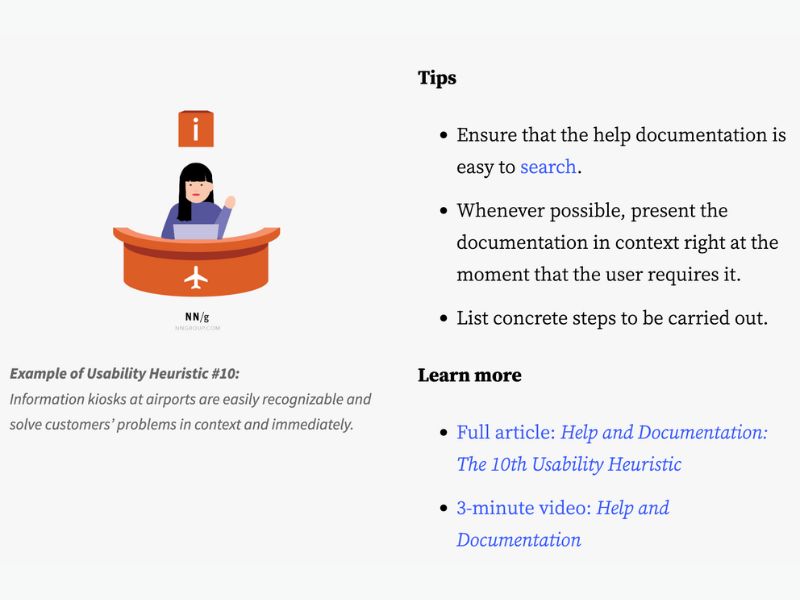
This article has been edited from NNGroup in the Articles section by author Jakob Nielsen.






